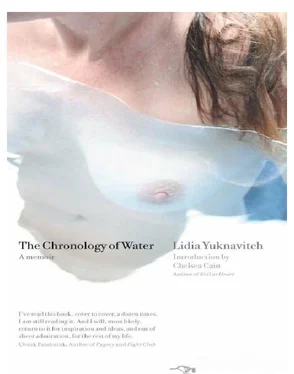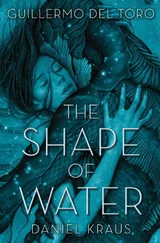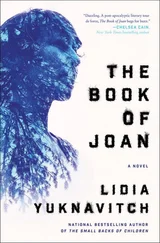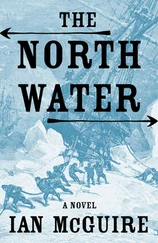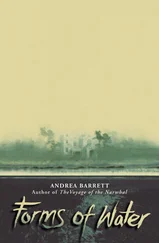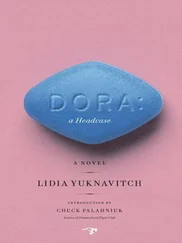I have a photo of my mother when she was a girl. It was between leg and hip operations. In this photo she was not in a body cast. It was probably taken a few years before my grandmother divorced my grandfather for molesting my mother’s sisters. She looks to be about 13. It is the sweetest girl face you have ever seen, but something in the tilt of her head, something in the lowered gaze, you can already see the sadness in her.
I know this isn’t true, but in some ways, I can see the woman who would pick up a bottle of vodka and never put it down. I can see the bottle of sleeping pills. The marriage that went so horribly wrong, and still she couldn’t leave. I can see the mother whose children drifted so quickly away from her like fish cut loose. I can see the Cancer that came to the rescue, for as her sister said to me shortly before she died, “Every day of her sweet life she was in pain, of one sort or another. At least now she’ll have peace.”
Where does repressed pain and rage go in a body? Does the wound of daughter turn to something else if left unattended? Does it bloom in the belly like an anti-child, like an organic mass made of emotions that didn’t have anywhere to go? How do we name the pain of rage in a woman? Mother?
I cannot see in her face that her children gave her joy, though she said that to me the week before she died, and I thought, looking at her milk white shrunken body, almost the body of a girl, how?
When the cop hand cuffed me and told me to sit in the back of his copmobile I was glad. Inside his car it was quiet. It smelled like air freshener and leather. I closed my eyes. Somewhere, very far away inside me, I felt a tiny pang of pain for the woman I’d hit and what was in her belly. But it was too much for me, so I opened my eyes and watched the cop write things down on a small clipboard instead.
Briefly and without any drama I wished I was dead. But there were no other emotions or thoughts accompanying that. It just sat there like me in the back seat of a cop car, flat and plain and unevolved. Then he was driving me away from the scene to the station to be breathalyzed.
In my head way back at the base of my skull near the top of my spinal cord I didn’t mean to I didn’t mean to I didn’t mean to I didn’t mean to I didn’t mean to I didn’t, did I?
Mean to?
The night stretched out long like it does when you fuck up. It’s like a night that lasts a year. Or like all the years of your life are suddenly in your lap, wailing like needy children. You can’t take care of all of them. You don’t even want to. You want to abandon each yearchild on the side of the road and bolt. I am not your mother.
After the autopsy of my baby girl, a doctor told me in his office, “There is nothing conclusive to associate with her death. The cord was not around her neck, and there were no identifiable physical problems of any sort. Here is a copy of the autopsy report. I’m sorry. Sometimes this happens, and there is no explanation.” I stared at the white wall behind his head. He handed me a form that encouraged me to attend a special group therapy for parents whose babies died.
When I left his office, I went into the clinic bathroom. I pulled my pants down and peed. I kept sitting there. Then I began to shred the white form he’d given to me into tiny pieces of paper, and I ate them, crying without a sound.
The person I hit was a brown skinned pregnant woman who had no English. She sat on the dirty silver guardrail and cried. I watched her shoulders shake. She buried her face in her hands. She said words I didn’t know into her own palms. She held her belly and rocked and wept. When they took me away I was so relieved I almost thanked the cops-strange saviors. In my head I thought take me away from this woman. I can’t be near her. I can’t look at her. I can’t even accept that she exists. The image of a grieving mother is one that could kill me.
How to Love Your Mother After She’s Dead
I FIRST MET MY MOTHER WHEN SHE WAS BORN WITH one leg more than six inches shorter than the other. A scar running kid-eye high up the length of her outer leg. From knee to hip. Stretching upward like wide pearled and waxen tracks. The eyes of a child fix on things. In the mornings while she dressed I would put my face so close to it I could feel my eyes shiver.
I first met my mother when I was born cesarean. Babies wouldn’t fit through the tilt of her hips and birth canal without their skulls caving in. When they reached in to slice the caul — that amniotic membrane between her body and mine-my eyes were already open.
I first met my mother in her childhood. In the operating rooms and hospitals that were her home for years and years. Inside the body casts. Next to the ridicule of hordes of gremlin children. Hobbling atop a shoe with a four inch wooden block attached.
I first met my mother the day my father threw a fist intimately close to her head just missing her cheekbone and instead opened up a gaping mouth in the kitchen wall that stayed like that for years.
I first met my mother the day my father’s mother said in her presence, “I don’t know why you had to marry a cripple.”
I first met my mother when she told me the only man who ever loved her right was gay, and he died “a death that laid waste to his body, Belle.” Before anyone knew what AIDS was.
I first met my mother the day she told me she could see things that weren’t there, except that they were, like armies crossing the freeway at night, like sea serpents over the side of the Golden Gate Bridge, like a UFO in the sky above her house in Port Arthur, Texas, like rabid poodles in the pear tree of our house at Stinson Beach. I was 12.
I first met my mother the night I had to wipe her smear of a 55-year old self off of the casino floor in Biloxi, Mississippi. The skin of her face was as soft and pelted as a baby’s head.
I first met my mother the night before my first of three marriages, when she turned to me and said, I almost married a rodeo man. His name was J.T. The next morning at my wedding, out on a beach in Corpus Christi, in the stage of menopause wherein your periods go nuts, she bled, a giant red wound blooming behind her if she’d been shot in the ass.
I first met my mother inside the fury of our arguments — matching each other’s rage all through my puberty and her middle age, how strangely glorious her never backing down, no one ever winning, just two women’s voices like claps of thunder drowning out the world.
I first met my mother inside her lifelong leg and hip pain. Underneath the arm length scar where a steel plate masqueraded as bone. A body in pain for the duration of a life. Every hour of existence.
I first met my mother when she signed the scholarship papers setting me free.
I first met my mother her singing I see the moon, the moon sees me, the moon sees everyone I want to see, god bless the moon, and god bless me, and god bless everyone I want to see. Her voice carrying me to dream. The weight of father lifting, lifting.
If I close my eyes I can see her.
I remember the first time I saw her swim, joining me in the deep water, leaving my father standing impotently in chest high water. How powerful her sidestroke. The joy in her face. How beautiful the gleaming white skin of her arms. The long glide of her. The water swallowing the fact of her pain, her marriage, her leg.
My mother loved to swim more than anyone I know.
Swan.
Ernesto
Alejo
Angel
Manuel
Rick
Ricardo
Sonny
Lebron
Pedro
Jimarcus
Lidia
Notice anything about those names?
Six Mexicans, one Italian, one African-American, one Jamaican, one white dishonorably discharged Navy guy wound tighter than dynamite, and me. Compliments of the State of California.
Читать дальше
